Food
Shake-a Pudd’n
Recipe for disaster.
Posted By: Paul - Sat Dec 07, 2019 -
Comments (3)
Category: Accidents, Food, Advertising, Children, 1960s, Dance
Prices Unlimited
Greedy, unpatriotic girls receive a visit from the Ghost of Meat Rationing Present.
Posted By: Paul - Sat Nov 30, 2019 -
Comments (2)
Category: Food, PSA’s, Public Humiliation, War, 1940s
Bewitched by a sandwich
Compelling excuse. Back in 1947, when police apprehended 18-year-old Raymond Adame as he was attempting to kidnap Celina Jarmillo, he explained, "Last April she made me a sandwich of potatoes, beans, and macaroni, and according to our legend she bewitched me... I couldn't get out of her spell."
Vancouver Sun - Nov 7, 1947

Celina Jarmillo

Raymond Adame
source: Los Angeles Public Library
A follow-up report, from January 1948, noted that Adame was, in the end, only charged with assault rather than kidnapping. And it revealed that the bewitching sandwich had also included "fish eyes".
Does that literally mean eyes from fish, or is "fish eyes" a term for some less disgusting type of food?

Arizona Daily Star - Jan 9, 1948
Posted By: Alex - Fri Nov 29, 2019 -
Comments (5)
Category: Crime, Food, 1940s
Cramonnaise
The patent application was abandoned in 2019.
It seems to be a peculiar feature of mayonnaise blends that they inspire weird names. Such as 'mayochup,' posted about previously.

Posted By: Alex - Thu Nov 28, 2019 -
Comments (3)
Category: Food, Patents
The nonbar

The nonfood company is the maker of the nonbar, an “algae-based nutrition bar.” Sam Bloch, writing for ARTnews.com, offers this review:
You can buy the nonbar here, 10 for $30. Though they're currently listed as being on back order.

Posted By: Alex - Sat Nov 23, 2019 -
Comments (2)
Category: Food
When the Cook Can’t Look
A cookbook for the blind, written by Ralph Read, and published in 1981.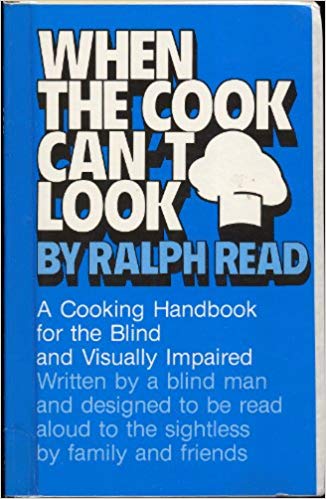
A sample of some of his tips and techniques, from a review in the Austin American-Statesman (Sep 22, 1980):
You don’t need to alphabetize bags of things, he says, because you can just pinch them. Split peas do not feel like elbow macaroni.
Tactile memory is very important, for things like knowing which end of a milk carton has the spout. Spices don’t need labeling because you can smell them. Smell and hearing are important factors in cooking without sight. They tell you when things are almost done.
He generally cooks slowly to help “prevent things from getting away from me.” Read has no special gadgets for cooking, though he says friends have shown him catalogs with specialty items for the blind. “Ninety-nine percent of that gadgetry is useless — though I’m interested in the fact that Amana has a blind consultant working with them in Dallas to help develop a microwave oven for the blind.”
There are some definite “don’ts,” Read says, such as not using dangerous items such as an electric beater or broiler. You can get the same desired results without unnecessary risk by using a hand beater or pan-broiling a steak.
You can read the entire book at archive.org.
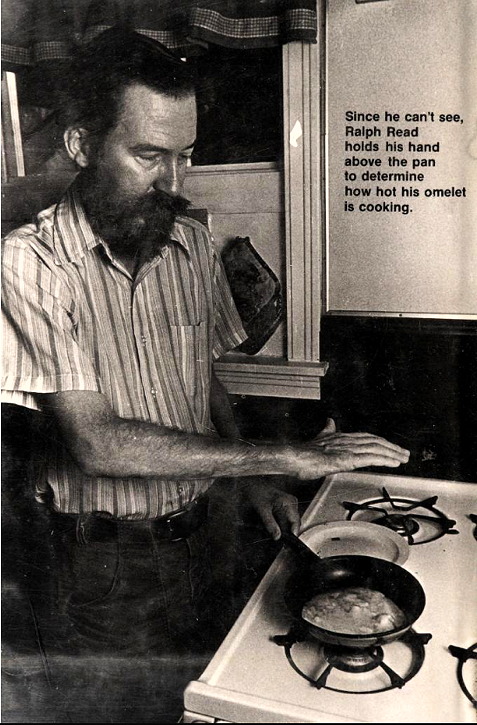
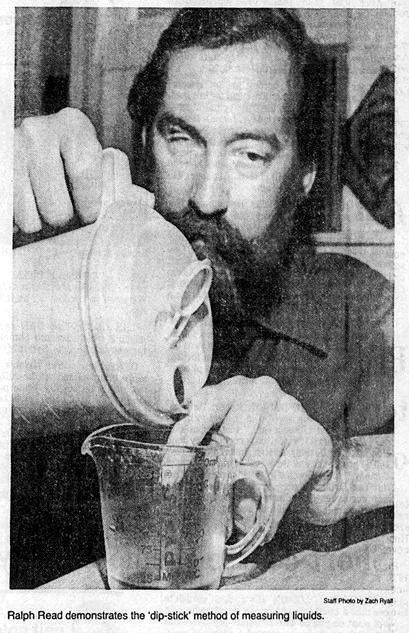
Posted By: Alex - Sun Nov 17, 2019 -
Comments (3)
Category: Food, Cookbooks, Books, Differently Abled, Handicapped, Challenged, and Otherwise Atypical
Edmund Love and His Restaurant Quest
In 1964, THE SATURDAY EVENING POST profiled Edmund G. Love, who intended to eat his way through approximately 5000 NYC restaurants.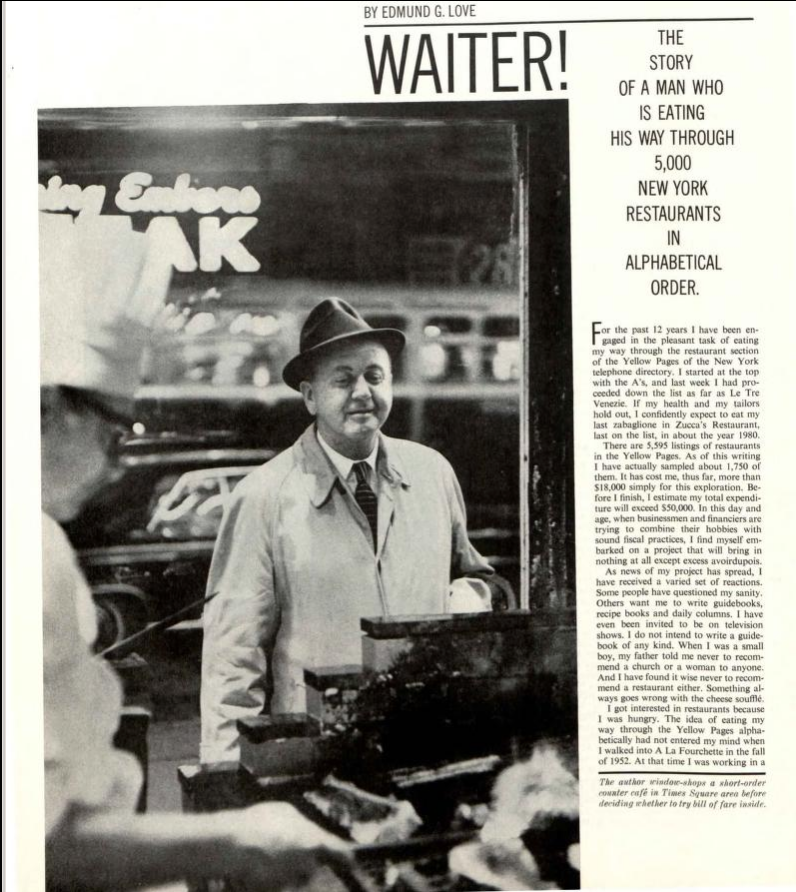
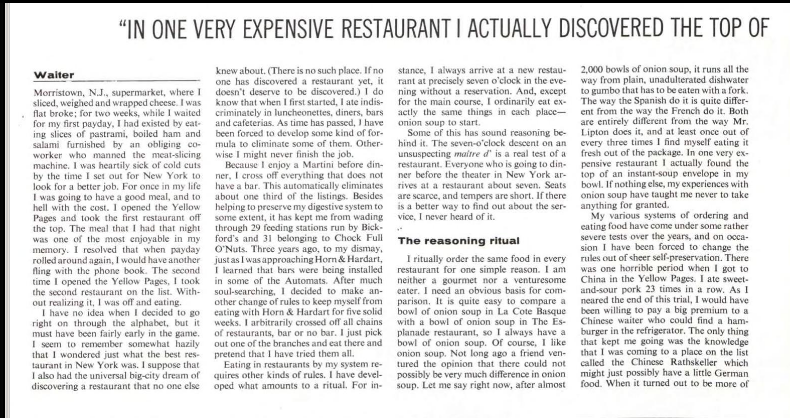
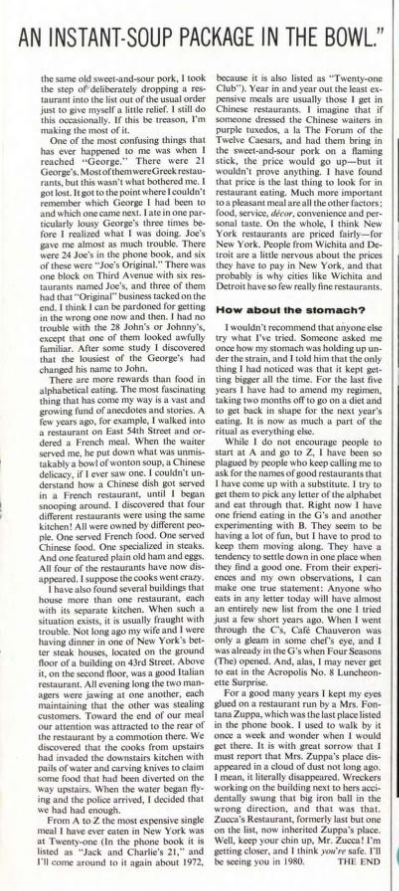
By 1973, when THE NEW YORK TIMES took notice, his quest had ballooned to 6000.
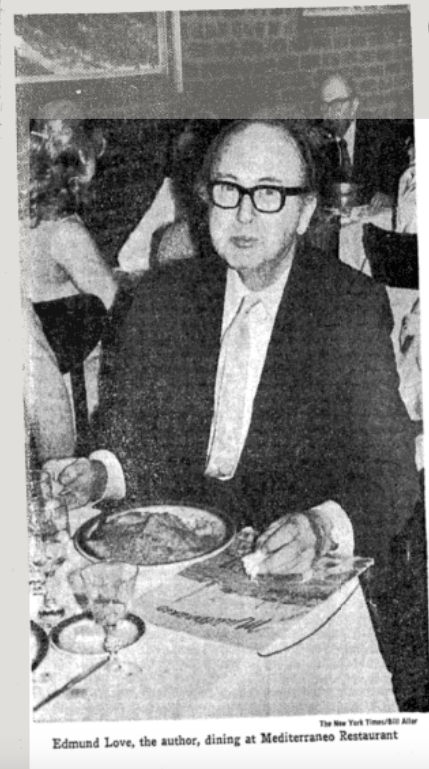
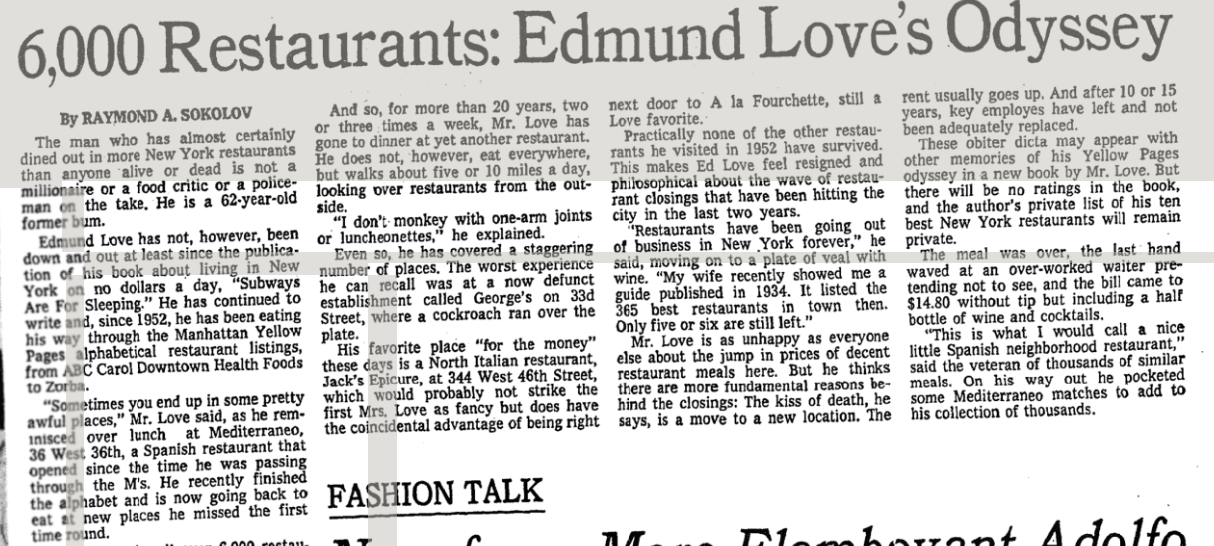

His 1990 obituary in the NYT says he managed to hit 1750 of them.
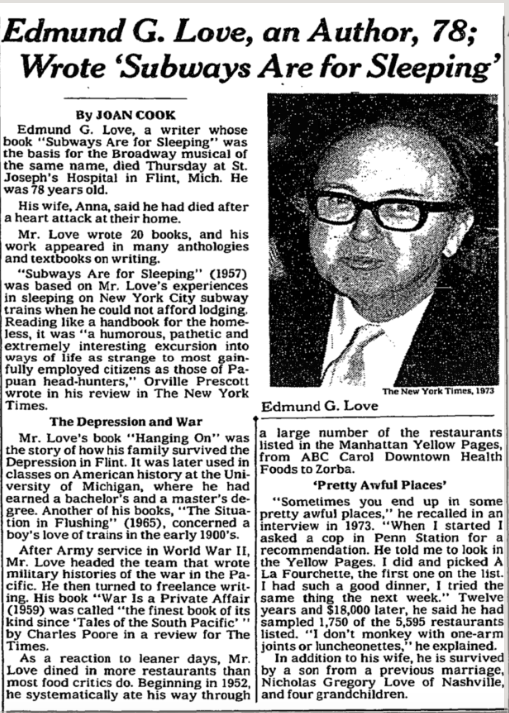
Posted By: Paul - Thu Nov 07, 2019 -
Comments (4)
Category: Addictions, Bums, Hobos, Tramps, Beggars, Panhandlers and Other Streetpeople, Eccentrics, Food, Restaurants, World Records, Twentieth Century
Pabst-Ett Cheese
The ad copy claimed that it wasn't cheese. Instead, it was "more than cheese." So what exactly was this stuff?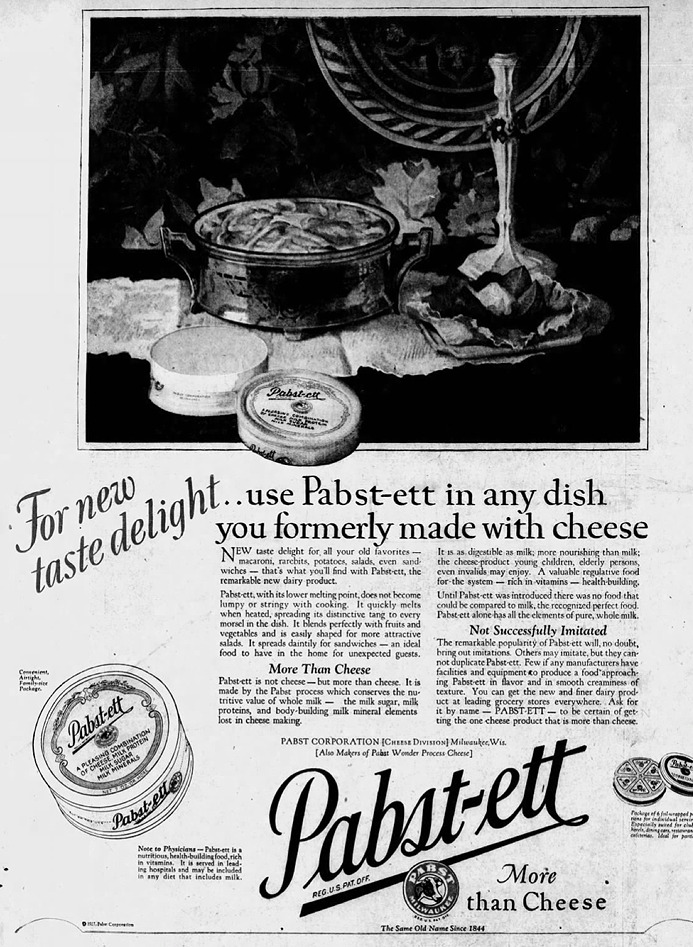
San Francisco Examiner - Aug 7, 1927
It is as digestible as milk; more nourishing than milk; the cheese-product young children, elderly persons, even invalids may enjoy. A valuable regulative food for the system — rich in vitamins — health-building.
The Vintage Recipe Blog explains that it was a "a processed whey cheese similar to Velveeta but more spreadable." The Pabst Brewing Company created it in the 1920s as a way to find an alternative line of business during Prohibition. When Prohibition ended, they sold the rights to Kraft, who discontinued the product a few years later.

Posted By: Alex - Wed Nov 06, 2019 -
Comments (4)
Category: Food, 1920s
The Life Cereal Protein Spokes-creature
Most cereal spokes-beings are identifiable characters: leprechauns, toucans, sea captains. But this character for Life Cereal is apparently a Protein.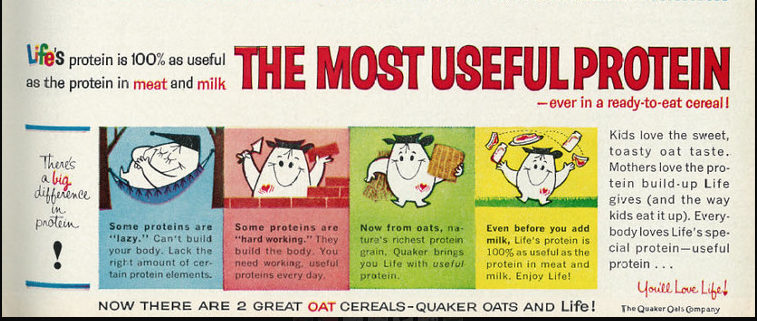
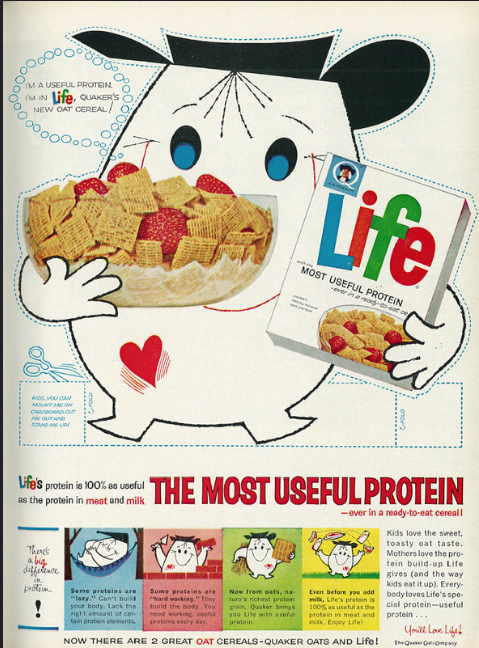
Posted By: Paul - Sat Nov 02, 2019 -
Comments (1)
Category: Anthropomorphism, Business, Advertising, Corporate Mascots, Icons and Spokesbeings, Food
Halloween Donut Party
Throughout the 1950s, the donut industry tried hard to make Donut Parties a Halloween tradition. Their PR men also claimed that donuts could help make Halloween "more nutritious."
San Bernardino County Sun - Oct 30, 1957

San Bernardino County Sun - Oct 30, 1957

Oct 23, 1955 - “Dos & Don’ts for Halloween Donut Party”

The Salem News - Oct 17, 1955
Posted By: Alex - Thu Oct 31, 2019 -
Comments (4)
Category: Food, Junk Food, Nutrition, Halloween

| Who We Are |
|---|
| Alex Boese Alex is the creator and curator of the Museum of Hoaxes. He's also the author of various weird, non-fiction, science-themed books such as Elephants on Acid and Psychedelic Apes. Paul Di Filippo Paul has been paid to put weird ideas into fictional form for over thirty years, in his career as a noted science fiction writer. He has recently begun blogging on many curious topics with three fellow writers at The Inferior 4+1. Contact Us |




